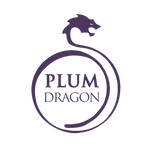
Injuries don’t heal by rest alone. Whether you’re dealing with something recent or chronic, your body needs circulation, nourishment, and movement to rebuild stronger. Our latest blog walks you through the three key stages of recovery, plus what to do and the products to use to maximize your recovery.
Read the Blog
As the seasons shift from warm to cold, many people notice their old injuries return, or background annoyances start to become nagging issues.
This isn’t just your imagination. In fact, it’s a well-known phenomenon in Traditional Chinese Medicine. According to TCM, cold weather can “awaken” old injuries by slowing down the flow of blood and qi in your channels. This leads to stagnation, stiffness, and eventually pain.
There’s also the issue of cold itself. In TCM, cold can enter the body (especially after an injury), lodging itself in the joints and soft tissues. Over time, these become weak points that get triggered when the temperature drops or in damp weather. That’s why fall and winter are peak times when old injuries flare up.
So, how can you keep cold and stagnation at bay so your old injuries can finally heal?
Never stretch or train on cold muscles. Spend at least 5 to 10 minutes doing gentle mobility work and targeted stretching to stimulate circulation and warm up your muscles and tendons before jumping into a workout.
These are major channels or vulnerable points where cold tends to enter and linger. Protect these areas by wearing layers, covering your neck with a scarf, and getting warm and dry after a workout.
A soak with blood-moving, warming herbs (as in our Warming Foot Soak or Ho Family Herb Pack ) can penetrate deep into the channels and “dispel” the cold. Try soaking the painful area after training or on rest days.
Old injuries often benefit from regular application of warming, blood-moving herbal formulas like Ancestors Advanced Dit Da Jow. This blend was designed to target chronic stagnation, support tissue repair, and promote deep healing for old injuries – especially when they flare up in colder months.

Using acupressure points at home can redirect circulation and energy to old injuries and jumpstart the healing process. The points below are especially helpful for soft tissue pain, stiffness, and stubborn inflammation from past injuries:
Massage each point in small circles 2-3 times each for 30–60 seconds daily, or after training.
Find this point on your inner ankle, about four finger-widths above the ankle bone, and just behind the tibia (shin bone). This point deeply strengthens the Spleen, encourages bloodflow, and relaxes the muscles.
Located on the top of the foot, between the big toe and second toe. Along with enhancing whole-body circulation, this point relieves stress and stagnation which often contribute to slow healing and pain.
Found on the sole of the foot, just behind the ball and directly in the middle. This point grounds the body and promotes deep relaxation so your body and mind can recover faster.

Warming herbs are powerful – not only do they improve circulation, but they can also quickly ease pain, reduce stagnation, and dispel the cold and dampness that linger in chronic injuries. Let’s get to know three key herbs that warm up our Ancestors Advanced Dit Da Jow and make it the go-to liniment for tackling chronic injuries.
Frankincense is a resin that’s known for improving circulation, reducing swelling, and relieving pain. In TCM, frankincense is especially helpful for injuries that feel cold and stiff.
Turmeric is a powerful anti-inflammatory herb used in both cooking and medicine. In TCM, it is mostly used to address pain and stagnation by moving blood and energy through the channels.
Dong quai nourishes the blood while also helping it move gently. It supports the recovery (and ongoing health) of tendons, ligaments, and muscle tissue.
Get the benefits of these three herbs and more with our Ancestors Advanced liniment – a formula specially designed to address long-standing pain, cold stagnation, and nagging old injuries that just won’t resolve.
SHOP NOW
When you’re dealing with old injuries, a warming, nourishing bowl of soup can help reduce inflammation, support circulation, and supply the nutrients injured tissues crave.
This turmeric ginger pumpkin soup is a perfect example of food as medicine:
Congee is extremely easy to make, but does take time. Consider meal prepping the congee and adding your chosen toppings when ready to eat.
Ingredients:
Want added healing power? Simmer your vegetable stock with dried turmeric,cinnamon (rou gui), and dried ginger.
GET THE RECIPE
Kate Downes is a Chinese medicine practitioner (MSAOM, NCCAOM, Dipl.OM) and wellness writer. Through her educational content for Plum Dragon Herbs, Kate hopes to help others gain a better understanding of the wonders of Chinese herbal medicine so they can be empowered in their own quest for natural, vibrant health.
A Special Offer for Our Newsletter Readers
We hope you enjoyed this newsletter. As a special thanks to our readers, we created a discount code you can use to save 20% off on one future purchase*: FALLNEWS20.
To be notified of our next quarterly newsletter and discount codes like these, become one of our regular email subscribers using the form directly below.
*Discount excludes buy 2, get 1 offer and herb grinder.
Sign up to get future newsletters and special discounts.
| Item | Price | Qty | Total | |
|---|---|---|---|---|
| Subtotal |
$0.00 |
|||
| Shipping | ||||
| Total | ||||
